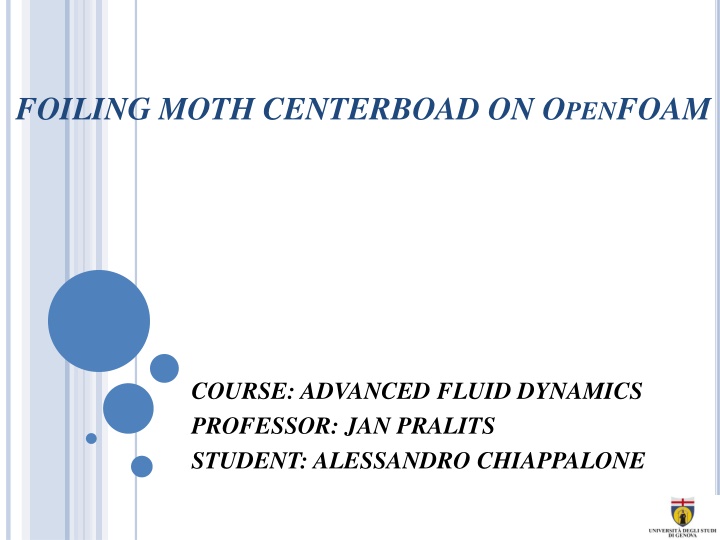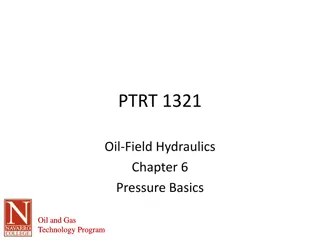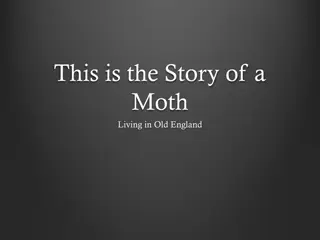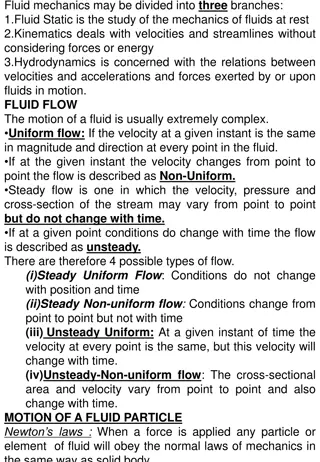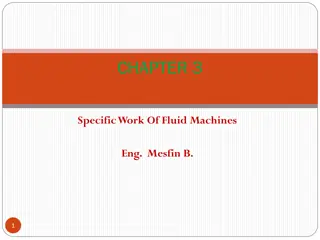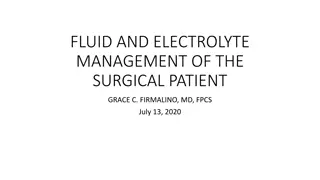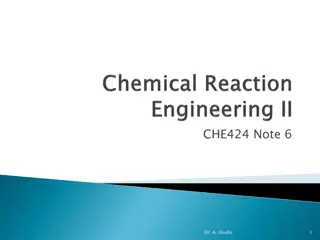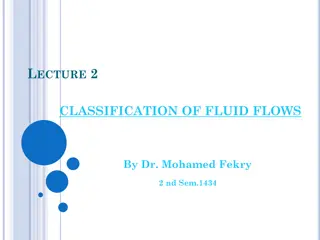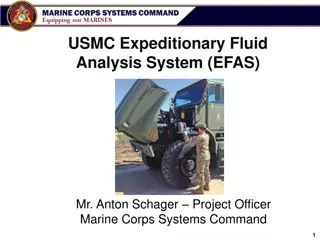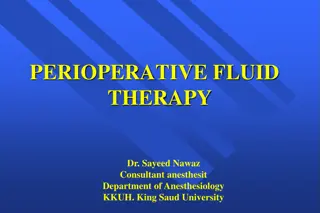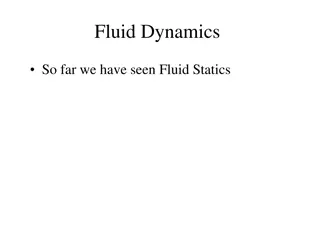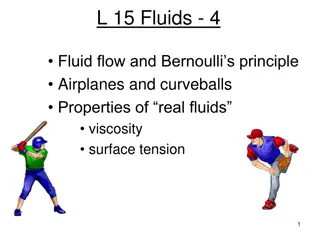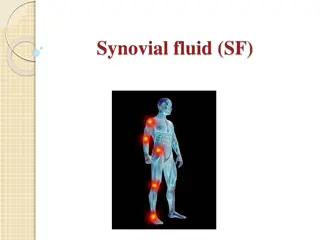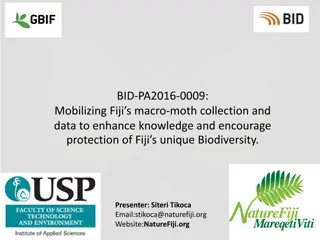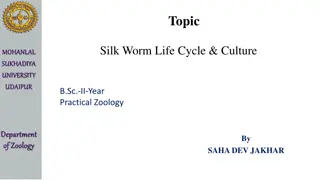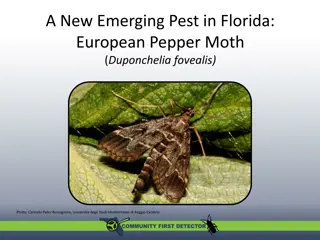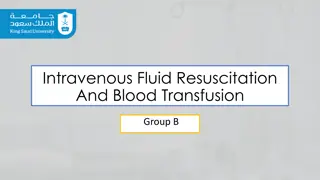Study of Fluid Dynamics around Moth Centerboard using OpenFOAM: Advanced Course
Dive into the advanced fluid dynamics course focusing on the foiling moth centerboard simulated on OpenFOAM. Explore the features of a moth, set targets for the study, choose the numerical solver, define boundary conditions, create geometry, meshing, and analyze results through numerical simulations.
Download Presentation

Please find below an Image/Link to download the presentation.
The content on the website is provided AS IS for your information and personal use only. It may not be sold, licensed, or shared on other websites without obtaining consent from the author.If you encounter any issues during the download, it is possible that the publisher has removed the file from their server.
You are allowed to download the files provided on this website for personal or commercial use, subject to the condition that they are used lawfully. All files are the property of their respective owners.
The content on the website is provided AS IS for your information and personal use only. It may not be sold, licensed, or shared on other websites without obtaining consent from the author.
E N D
Presentation Transcript
FOILING MOTH CENTERBOAD ON OPENFOAM COURSE: ADVANCED FLUID DYNAMICS PROFESSOR: JAN PRALITS STUDENT: ALESSANDRO CHIAPPALONE
INTRODUCTION WHAT IS A MOTH ? FEATURES: LIGHT FAST FUNNY HOW CAN IT FLY?
SETTING THE PROBLEM TARGETS: Study of fluid dynamics around the centerboard with a flow of 5m/s Determination of Cl and Cd for the centerboard in 5 different geometries Determination of the minimun Cl for a total weight of 100 kg FUNDAMENTALS PARAMETERS: Variable Mean Unit Value c Water Velocity [m/s] 5 L Characteristic Length [m] 0,11 Kinematic Viscosity / [m2/s] / 1.2 10-6 458332 Re
NUMERICAL SOLVER EQUATION TO SOLVE: SOLVER CHOSED: SimpleFoam Based on RANS analysis
BOUNDARYCONDITIONS VELOCITY PRESSURE The represented parallelepiped with an X side of 12 [m] of 2.4 [m] and a Z side of 2.5 [m]. streamwise direction, axe is the lift direction (vertical). fluid domain by is a an Y side X is the Z
GEOMETRY CREATED BY USING THE INVENTOR CAD SOFTWARE BASED ON GARDA TOP 3 GEOMETRY Span [mm] Section Chord[mm] Centreboard NACA 0012 1000 120 NACA 63412 860 110 Centreboard Foil
GEOMETRY Trailing edge flap s angle CAD Model -10 TO STUDY THE Cl VARIATION HAS BEEN USED 5 DIFFERENT GEOMETRIES -5 0 5 10
MESHING :Mesh has been done in 4 steps: BlockMesh command to make a mesh of the control volume [54 8 8] Research of the best compromise between refinement surfaces edges and the calculator s power.
MESHING USE The addLayer tool to refine the mesh close the surfaces Increase the refinement beside the centerboard where there is turbulence.
RESULTS Numerical simulations always need a grid convergence study. This study was done only on the geometry with 0 for trailing edge flaps but it s applicable also on the other geometries. CL CD Cell s number 136000 1,0802 0,384936 643000 0,84637 0,248135 1550000 0,849123 0,269452 2550000 0,860901 0,279953 3740000 0,859068 0,276287
RESULTS Some parameter are important for a good simulation The yPlus: is a non dimensional quantity calculated close to wall. To have a good simulation this value must to be between 10 and 300. 1. How is possible to obatain this value? Trailing edge flap s angle Centerboard s yPlus max Ship s yPlus max 295 186 -10 280 150 -5 It is necessary to work on the mesh and in particular on the layers near the walls. (RefineWallLayer) 10 260 175 165 0 255 145 5 165 Residuals and time-step continuity: Residuals have to be much lower as possible to obtain a good simulation. Generally the residuals should be lower than 10-4 10-5. To respect the mass conservation law it is essential that this value is lower as possible. Usually a number lower than 10 -11 10-12 is acceptable.
RESULTS Pressure and Velocity: Flap s angle Pressure Distribution Velocity Distribution -10 -5 0
5 10 And for the symmetric profile?
RESULTS WATH ABOUT THE Cl-Cd VALUES AND TRENDS ?
RESULTS To find the minimum value needed of CL for 5 m/s we supposed a total weight of 100 kg (boat + skipper). Variable Mean Unit Value where c Water Velocity [m/s] 5 A Approximated foil area [m2] 0,094 Water Density Boat Weight Force [Kg/m3] [N] 1000 981 mg The solution give: CL= 0.834
CONCLUSION We obtained that : Lift is generated with a NACA 63412 in each case except the case with -10 flap s angle. The angle with lower drag and a positive lift is -5 To lift a total weight of 100 kg ( boat + skipper) it is necessary work with a flap angle higher than 0 with a speed of 5 m/s FUTURE DEVELOPMENTS The flap s angle is determined by the speed of the ship trough the sensor called wand (reported in figure 1.1. ) The hull surging over the sea level causes a big drag fall which is not considered in this study. Improve the speed variation to study lift and drag in function of the hull s velocity.
